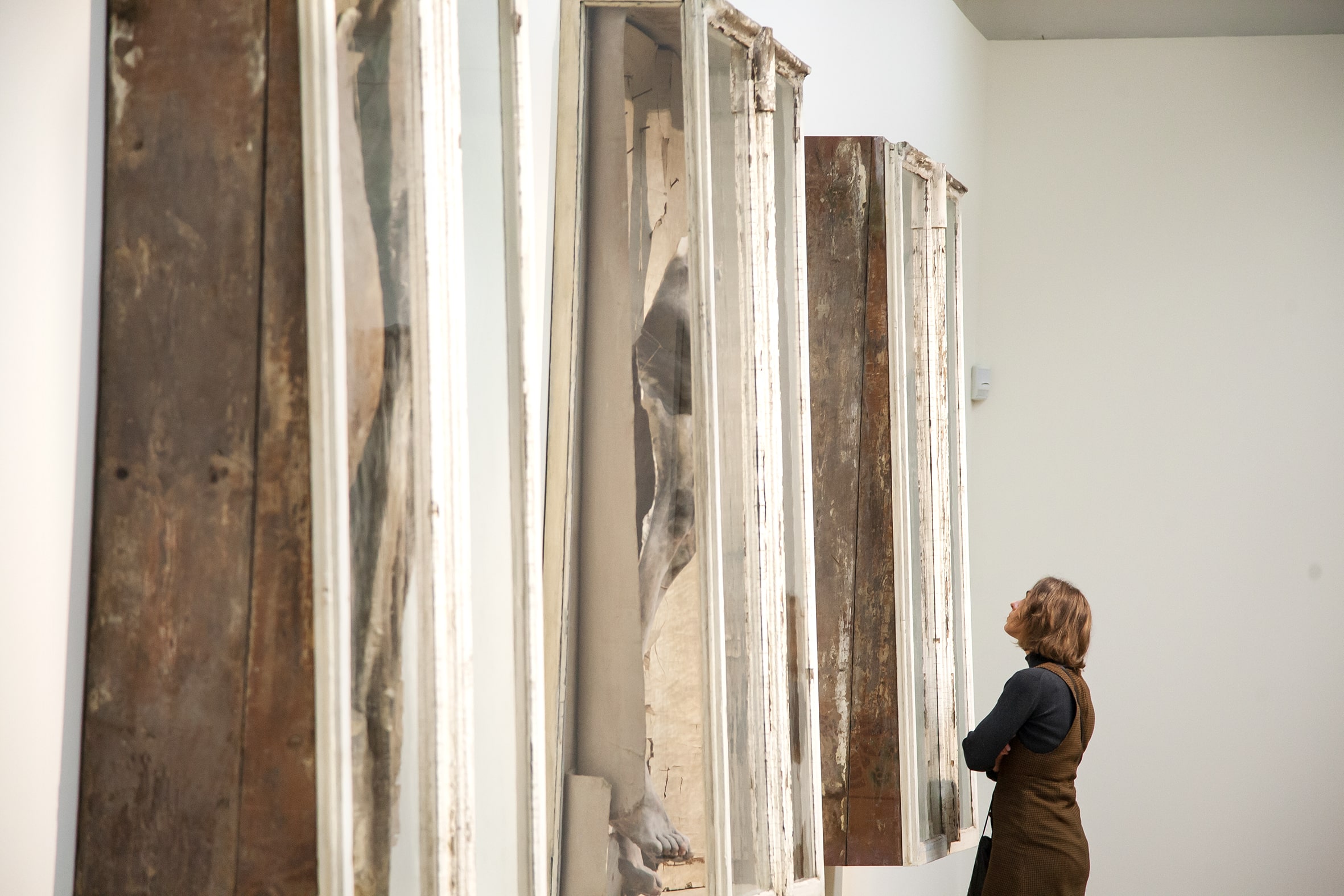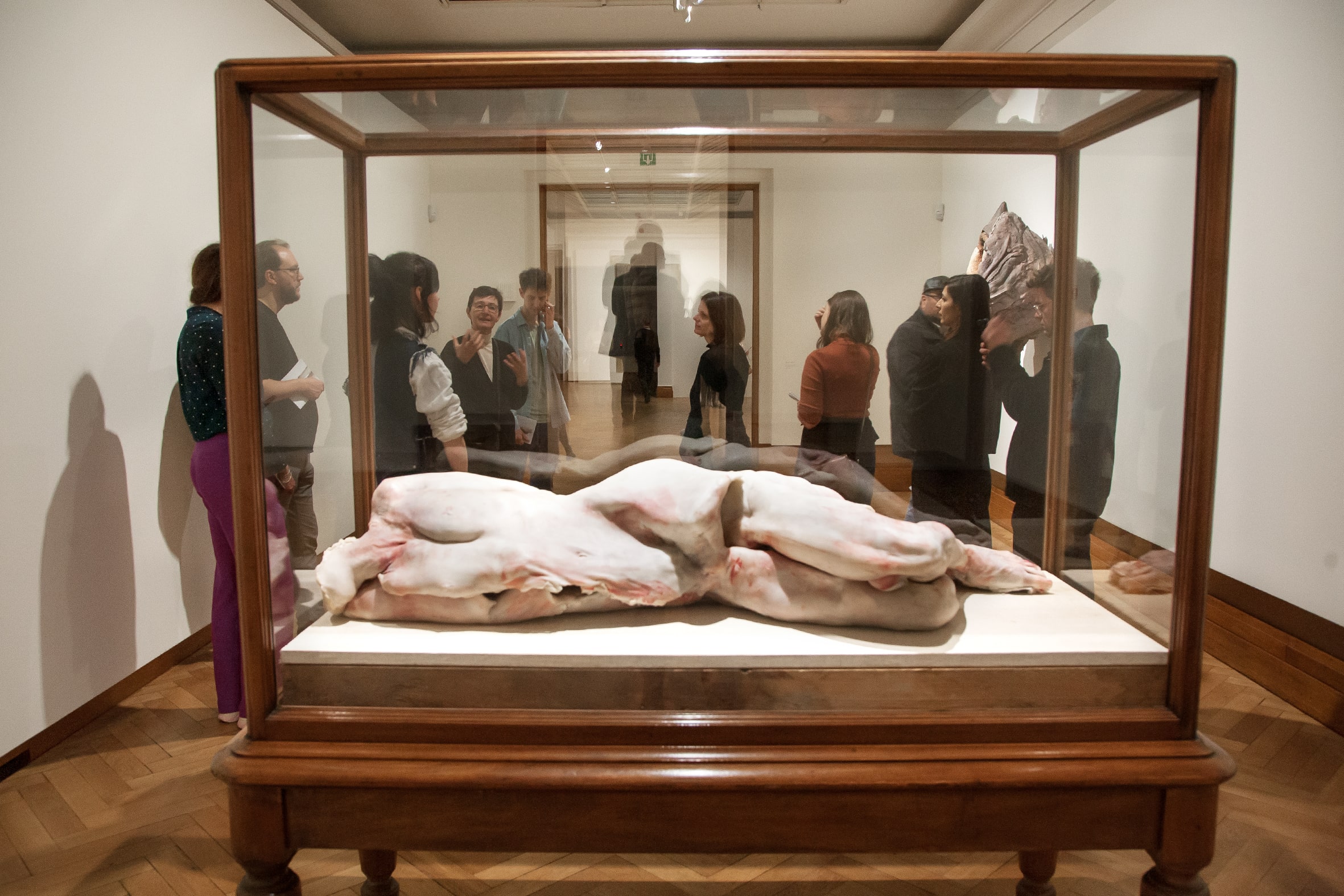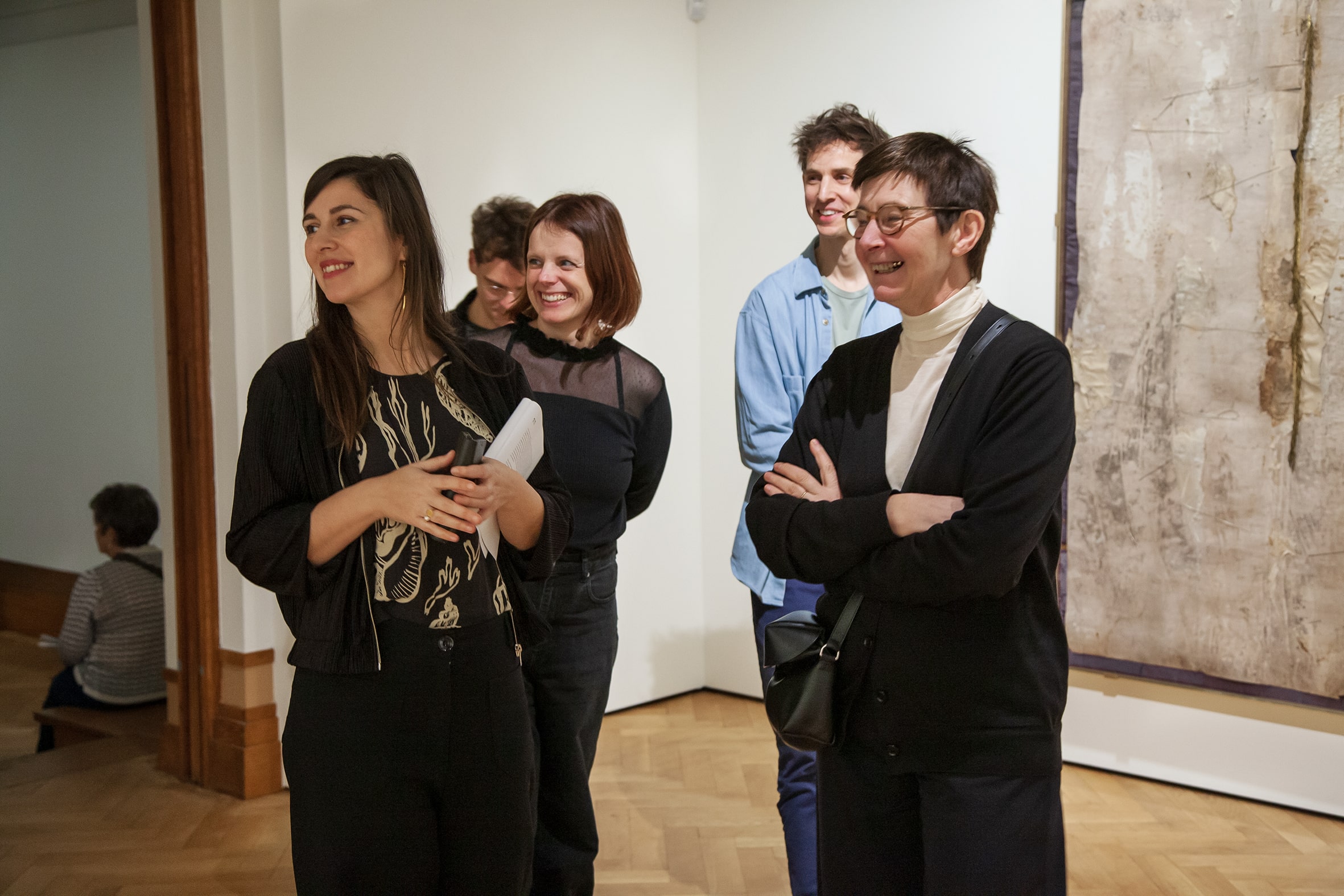An exchange between Berlinde De Bruyckere and CELA-writers
During the international talent development program CELA (Connecting Emerging Literary Artists), participants are translating, traveling and performing. On top of that, they engage in a mentorship program. The CELA translators all work together with an experienced mentor, who is active in ‘their’ combination of languages. For the writers, selecting a meaningful mentor is less obvious. Flemish CELA writers Lieven Stoefs, Anneleen Van Offel and Tülin Erkan looked beyond the boundaries of their own discipline and experienced an unforgettable day with internationally renowned artist Berlinde De Bruyckere.
‘In the next (dozens of) years, I hope to be able to slowly work toward a pile of books. In this, evolving as an artist is essential to me – nobody wants to make the same work over and over. How do you go about that? Or how do other artists go about that?’ As in a letter to Santa Claus, Lieven Stoefs was dreaming big when he proposed a studio visit to Berlinde De Bruyckere as part of the CELA mentorship, joined by the other Flemish writers in the trajectory. Sometimes dreams really do come true, as De Bruyckere didn’t just agree to this exchange – she also invited the writers to an exclusive guided visit to her exhibition Khorós, which would open at Brussels’ BOZAR museum in February 2025.
Writing in tableaux
That’s why on a sunny Friday morning in late February, one artist, three writers and a handful of deBuren colleagues enter the Khorós exhibition through a monumental first room, dominated by the piece ‘Lost’. It shows an enormous mare, dangling from the ceiling from one leg, stripped of eyes and of the foal she was carrying in her belly. De Bruyckere talks about the practicalities, as well as the emotional side of the installation. Her intent with the work was to convey the feeling she got when she first was confronted with the dead animal: not horror, but sorrow and emptiness. This perceptive, embodied gaze is a common thread throughout the whole tour.
‘I am touched by how she opens up to impulses and impressions, and how she is able to incorporate these into her imagery. Not only the forest and wilderness inspire her, as is obvious in her work, but also what is close by and seems unrelated to it. It is not about the environment, but the way in which you look at the environment and allow it to flow through you. In grandeur and in detail. [...] I want to engage with my own text in this more “physical” way. Writing in tableaux, in images that succeed each other.’ – Anneleen Van Offel
Writing doesn’t need to be a solitary act
Further down the room, we encounter film footage of cinematographer Pier Paolo Pasolini, with whose visual language De Bruyckere once engaged for her first exhibition in Germany. He never left her since. 'We used to start our days in the studio with scenes from Teorema!' she laughs. 'Very intense, but to me, he is a timeless figure.'
Like the CELA writers, De Bruyckere strongly believes in seeking inspiration across disciplinary boundaries. She has worked together closely with writers such as Coetzee, Antjie Krog and Erwin Mortier and happily draws from the exchange with a richly varied palette of artists – ranging from Werner Herzog to Lucas Cranach or Patti Smith, whose text can be heard in the exhibition. These exchanges each time generate very specific energies. With her own writings – which she humbly calls ‘scribbles’ – De Bruyckere occasionally ventures into the realm of words herself, for example in a project revolving around the ‘Besloten Hofjes’ in Mechelen.
In the exhibition we browse through numerous publications, often the results of these interdisciplinary collaborations. These books take time to make, De Bruyckere admits, but they are a passion of hers. ‘And I do it for myself, too: when works are sold, I can still revisit them in the books.’
‘Writing often feels like a solitary act, but it doesn’t need to be. We need each other as sounding boards, mirrors, pats on the back, kicks in the butt, soft blankets…’ – Tülin Erkan
Fierce autonomy
The exhibition leads us through rooms filled with diverse, but always powerful images: rough textures in wood, paper, and frayed blankets, a towering Arcangelo, stretched animal skins, sensual bodies barely believable as wax creations… The writers eagerly ask about the origins of these images. Many trace back to De Bruyckere’s childhood in a working-class neighborhood in Ghent, the Muide. Her father’s butcher shop, her mother’s family flower farm, the angels she sketched, modelled on the chapel in her boarding school – these primal images keep returning.
‘As Bruno Schulz once said: two or three images from your childhood define your entire artistic career.’ Whether she has any fear of repeating herself? De Bruyckere recognizes the feeling, but at the same time she trusts her artistic process: ‘The design develops by working on it, through experiment.’ We see a fine example of this in the final room, where we find the series Plunder. A damaged piece of flooring, in a way resembling bark, hung in her studio for months before she started working the material. Recalling the poetic imagery of empty display cabinets in Iran, she turned the worthless into something valuable, using chasuble fabric and a frame.
‘In her visual language, which is as versatile as it is coherent, you sense a fierce autonomy, a deep belief in her work. At the same time, Berlinde seems to remain constantly open to new impulses, methods, and materials, and is always looking to expand her contours. [...] She described how she had prepared for the exhibition, using a scale model to divide her work across the space, searching for the right rhythm, the balance between light and dark, between raw and tender. It made me think of arranging the chapters of my new novel – wanting to move the reader without overwhelming them, leaving space to breathe where needed.’ – Lieven Stoefs
Starting out void
After the visit, the group heads over to deBuren for a meal and continued conversation. After talking themes and inspiration, more practical topics surface, such as the art world in the 1980s and combining art with parenthood. The writers gift the artist their latest books, email addresses are exchanged.
De Bruyckere asks the three writers about the images they start from in their writing processes and the spaces where they write – because that matters! Although De Bruyckere has a large studio with assistants in an old school in the Muide, her drawing room at home is very precious to her. ‘I couldn’t handle people commenting on my drawings anymore. I wanted a room of my own for all my collected paper samples and sketches, that doesn’t need tidying up. Sometimes I just sit there, alone with my paper. In the past, I would have felt guilty about that, but now I know it’s part of the process of becoming mentally free.’ This stays with Lieven Stoefs, as he reflects back on it: ‘Every artistic work, visual or literary, starts out void, must be allowed to germinate, to gain strength in its fragility, before showing itself to the world.’
The exhibition Khorós by Berlinde De Bruyckere is on view at BOZAR until August 31.
Text: Aline Lapeire
Translation: Hanna de Grave-Loyson
Photos: Marianne Hommersom




